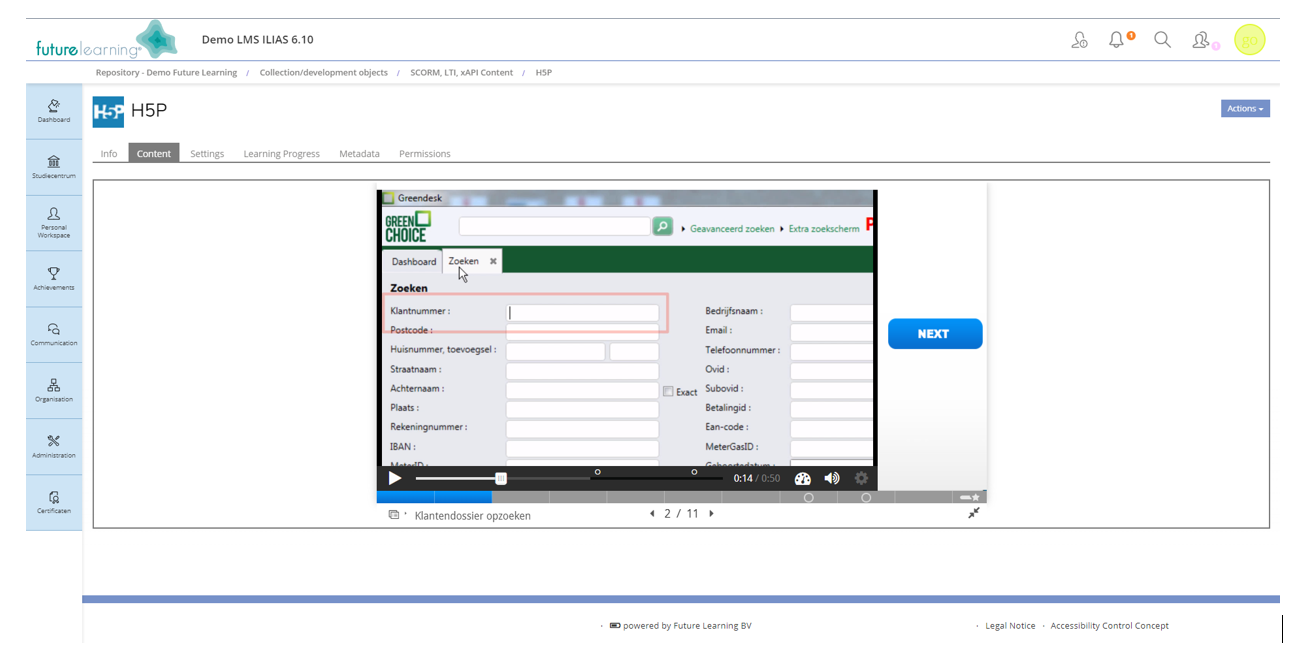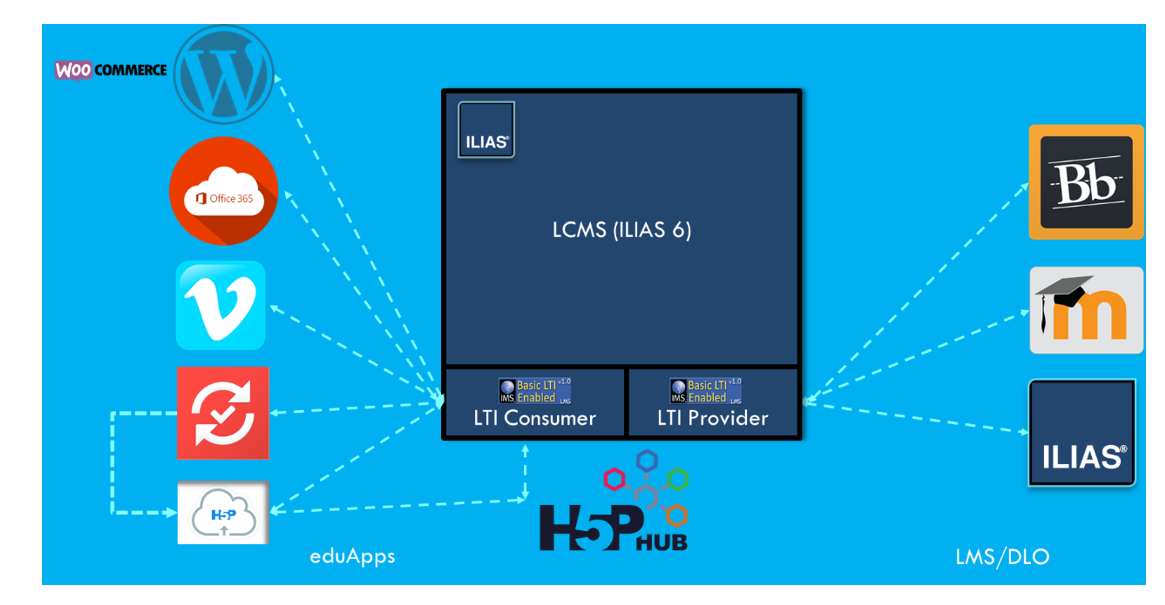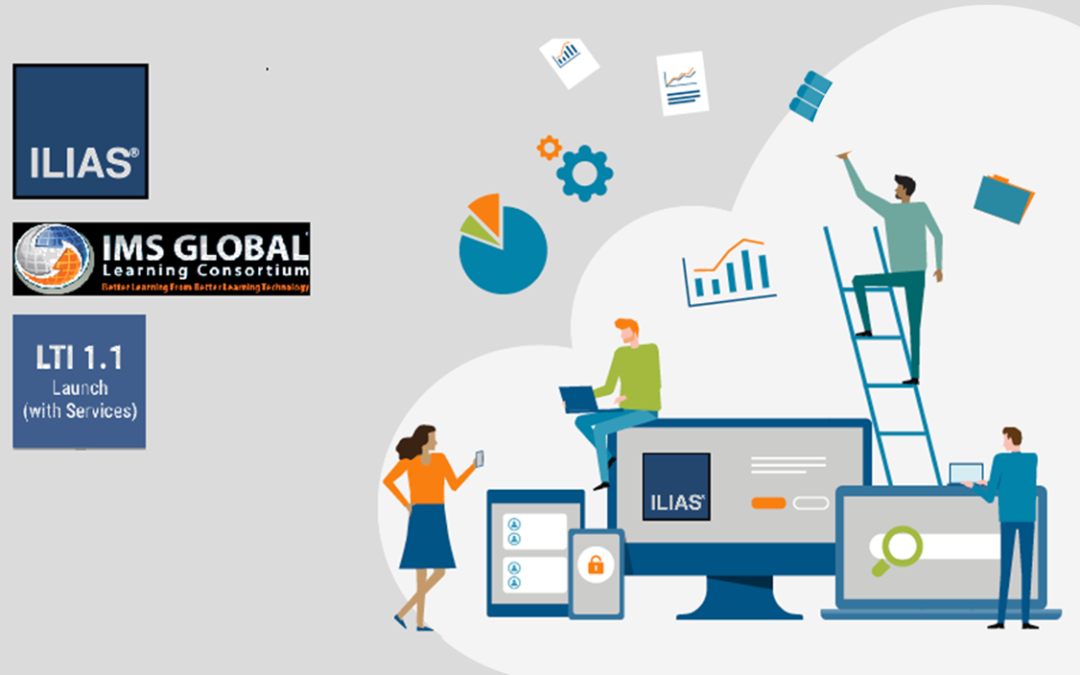ILIAS in combinatie met LTI: eindeloze mogelijkheden voor uw eLearning-ecosysteem
Waarom LTI? Dit is de centrale vraagstelling van dit whitepaper. Welke voordelen biedt LTI naast de bestaande mogelijkheden van een LMS, en de mogelijkheid om allerlei leerinhoud te uploaden?
Met de LTI-standaard (Learning Tools Interoperability – Uitwisselbaarheid van Leeractiviteiten) van het IMS Global Learning Consortium kunt u eenvoudig een breed scala aan externe tools, leerinhoud en leeractiviteiten die online beschikbaar zijn, plug-and-play koppelen binnen uw LMS of ELO. Deze tools worden ook wel EduApps genoemd. In tegenstelling tot SCORM, een andere bekende leerstandaard afkomstig van het Ministerie van Defensie van de VS, is dat pakketten moeten worden aangemaakt en geüpload naar het LMS, wat kan leiden tot contentmanagement perikelen. SCORM is nu vervangen door xAPI en CMI-5. Deze nieuwe leerstandaarden zijn ook van het Amerikaanse Ministerie van Defensie afkomstig. Deze nieuwe standaarden zijn gecreëerd door een consortium van gebruikers en leveranciers genaamd LETSI op basis van daadwerkelijke gebruikerswensen en business cases.
LTI is meer gecreëerd binnen het gebied van onderwijs, uitgeverijen, overheid en gezondheidszorg, en is ontworpen om contentmanagement perikelen te omzeilen en het gemakkelijker te maken om te integreren. Veel scholen, universiteiten, ziekenhuizen gebruiken LTI, omdat het hen in staat stelt zich te concentreren op het leren en niet op de technologie. Het gaat hierbij ook niet alleen om content, maar ook om de integratie van andere leeractiviteiten en tools. LTI en xAPI zijn beide leerstandaarden die overeenkomsten hebben en verschillen. De belangrijkste overeenkomst is dat leerinhoud niet binnen het LMS hoeft te staan, maar ook op een contentserver. Een verschil is dat LTI een simpele datarapportage heeft naar het LMS, een zogenaamde Grade die door het LMS in de Leervoortgang kan worden opgeslagen. Maar LTI ondersteunt ook aanvullende applicaties naast leerinhoud. Dit zijn de zogenaamde Outcomes. xAPI kan daarin veel meer bieden, is meer gericht op gedetailleerde data-analyse. Beide maken het mogelijk om leerinhoud op een andere server af te schermen door middel van authenticatie.
Bij het plannen en bouwen van onlinecursussen zijn er soms online bronnen of tools die een perfecte aanvulling is op bestaande cursusbronnen en lesmateriaal. Een bekend voorbeeld is H5P.COM. Meestal worden deze tools geleverd als SAAS-services op een andere server dan het LMS. Het gebruik van inhoud of hulpmiddelen die niet worden geplaatst binnen uw Learning Management System betekent echter vaak dat studenten zich separaat moeten aanmelden bij externe toepassingen of dat het moeilijk zal zijn om resultaten of cijfers op te halen. Om een eenvoudige integratie van externe tools in een LMS mogelijk te maken – en ervoor te zorgen dat dit op een naadloze en veilige manier gebeurt – ontwikkelde IMS Global de Learning Tool Interoperability-standaard (LTI). Assignment en Grade Services waarmee gemakkelijk voortgang vanuit verschillende tools kunnen worden samengevoegd in het LMS. Oftewel LTI richt zich vooral op het makkelijk maken van het integreren van aanvullende tools en content. In LTI 2.0 zal de integratie van tools binnen een LMS nog veel transparanter worden. Nauwelijks te onderscheiden van de ingebouwde tools en activiteiten.
Plug-and-play externe tools voor het LMS
In wezen maakt de door IMS Global ontwikkelde LTI-standaard een beveiligde uitwisseling van informatie mogelijk maakt tussen een LMS, zoals ILIAS of Moodle en een externe leertool via authenticatie. De informatie die wordt uitgewisseld tussen het LMS en de externe tool omvat alle cursusinformatie en de gebruikersidentiteit, wat ervoor zorgt dat studenten eenvoudig van de ene leertool naar de andere kunnen navigeren zonder zich bij elk leermiddel apart te hoeven aanmelden. Versie 1.3 van LTI heeft nog meer functionaliteit om het makkelijk te maken zoals een Names en Role Service. Hierbij wordt de naam en de rol van de gebruiker doorgegeven aan het Tool, bijvoorbeeld docent of student. Deep linking, dat het mogelijk maakt om met een paar klikken content in te voegen en binnen het LMS te kopiëren.

Via LTI kunnen externe tools ook veilig informatie of feedback terugsturen naar het LMS, bijvoorbeeld de resultaten van de activiteit die studenten in de externe tool hebben gedaan. Al met al stelt LTI het LMS in staat om te fungeren als een centraal toegangspunt tot niet alleen de inhoud die daar wordt gemaakt of geüpload, maar ook tot veel externe tools of bronnen. Door LTI-tools te gebruiken, hoeven studenten ook niet meer over meerdere inloggegevens te beschikken voor verschillende websites, waardoor een soepele, consistente en betere leer- en onderwijservaring ontstaat. Voor ILIAS zijn ook verscheidene plug-ins beschikbaar waarmee functionaliteit kan worden toegevoegd. Het nadeel hiervan echter is dat deze continu up-to-date gehouden moeten worden voor elke ILIAS release. LTI kent dat nadeel niet.
ILIAS en LTI: eindeloze mogelijkheden voor een eLearning-ecosysteem
Het open source LMS ILIAS ondersteunt LTI in twee richtingen, om docenten in staat te stellen een grotere verscheidenheid aan tools en middelen te gebruiken om hun eLearning-ecosystemen te bouwen. Veel leveranciers van extra leerhulpmiddelen ondersteunen LTI omdat het hen in staat stelt om gemakkelijk te integreren in het hoofd LMS-systeem en om extra functionaliteit te bieden, zoals inhoud, inhoudscreatie, beoordeling, plagiaat detectie en vele andere hulpmiddelen die nodig zijn in een moderne digitale wereld. Inclusief ook geïntegreerde video-conferencen. Als u de lijst met LTI-gecertificeerde producten bekijkt, vindt u een breed scala aan bronnen – sommige gratis en sommige betaald – die u aan uw ILIAS LMS kunt toevoegen: van studieboeken tot chemie- en STEM-tools, tot dicteertools en meer.

De initiële vraagstelling waarom LTI? kan nu beantwoord worden. LTI maakt een LMS flexibeler, zonder te hoeven teruggrijpen op programmering of gebruikmaking van plugins/addons. Het is bedoeld als een plug and play manier om zowel leerinhoud, content creatie en vele andere tools toe te voegen via het Web op een veilige manier. Oftewel flexibel, veilig, makkelijk, snel en kostenbesparend. ILIAS ondersteunt LTI zowel als consumer als provider wat ILIAS nog flexibeler maakt. En dat op basis van open standaarden. Dit neemt in de toekomst van ILIAS alleen maar toe.
Blijft u graag op de hoogte en wilt u meer weten over de laatste nieuwtjes omtrent e-learning? Bekijk dan ook onze socials:
LinkedIn: Joke van Cappelle – Future Learning B.V.
Facebook: Future Learning B.V.
Instagram: Future_learning


Recent Comments